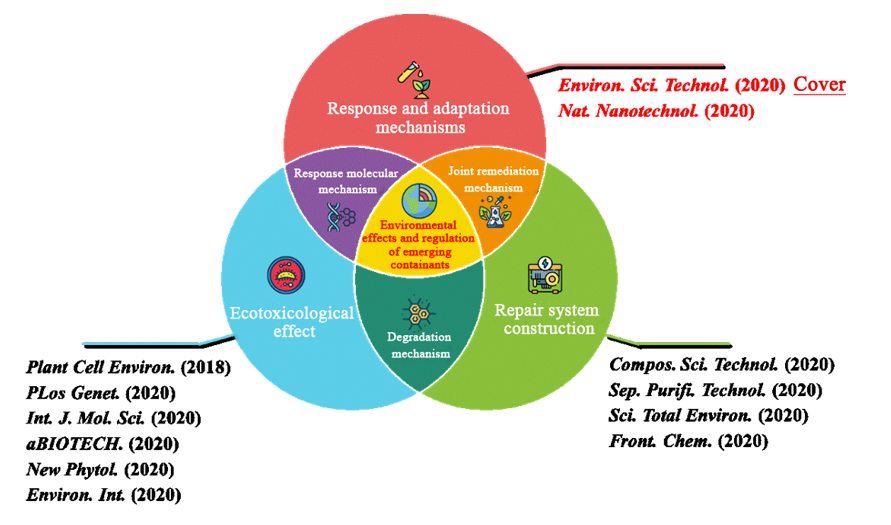Recently, the youth interdisciplinary science and innovative research groups on environmental effects and regulation of emerging contaminants (ECs), led by the School of Environmental Science and Engineering of SDU, have made some series breakthroughs in the ecotoxicology of ECs, the response of organisms to ECs, and joint remediation technologies of ECs.

The goals of the research groups are to clarify the environmental effects of ECs, support the formulation of control policies, and achieve protection under environmental intervention. Hence,in the field of the response of organisms to ECs, the research groups analyzed the response mechanism of freshwater plants to nanoplastics.
This result was published in Environmental Science & Technology, a top journal in the field of environment science, and selected as the cover article of this issue. In the field of the ecotoxicology of ECs, the research groups published six SCI-index articles in the famous journals, such asPlant, Cell & Environment,Environment International, etc., in the past three years. These results revealed the adaptation mechanism of plant roots under environmental stress.In the field of joint remediation technologies for ECs, the research groups published four SCI-index articles in the famous journals, such as Composites Science and Technology, Separation and Purification Technology, etc. These results expanded the application of hydraulic cavitation technology in the control of ECs.

Based on the previous interdisciplinary results, the research groups made a breakthrough in the effect of nanoparticles on terrestrial plant, and published a research paper titled "Differentially charged nanoplastics demonstrate distinct accumulation inArabidopsis thaliana" in Nature Nanotechnology. This paper focused on the bottleneck of the biological effect of nanoparticles on terrestrial plants, discovered the toxicity of differently charged nanoplastics onArabidopsis thaliana, revealed the transport mechanism of nanoplastics in plants, and established the relationship between the surface charge of nanoplastics and their toxicity to terrestrial plants. This study provided a direct evidence that nanoplastics can be absorbed and accumulated by terrestrial plants, and provided a reference for the safety assessment of nanoplastics in the terrestrial environment.
The youth interdisciplinary science and innovative research groups on environmental effects and regulation of ECs are jointly constructed by the School of Environmental Science and Engineering, School of Life Sciences, and School of Mechanical Engineering. The research groups fully utilize the advantages environmental science, biology science and mechanical engineering. In addition, the research groups will explore the new operating mode and innovation culture of the interdisciplinary science and innovative research.
Written by:Feng Lijuan
Edited by:Che Huiqing